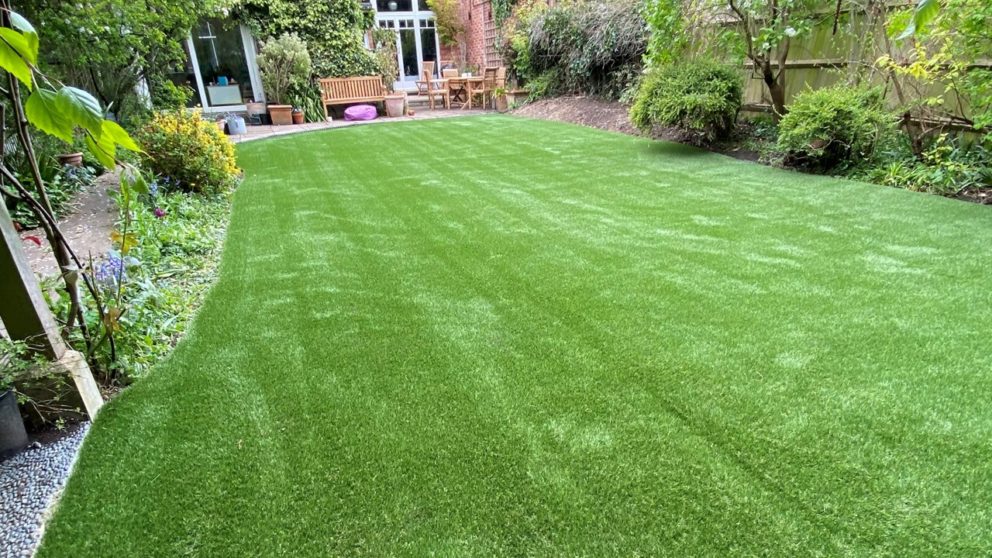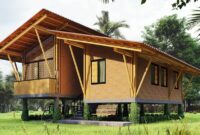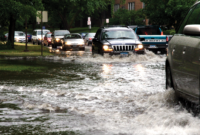How to Install Artificial Grass Like a Pro – Artificial grass is a fantastic, low-maintenance alternative to natural lawns. It stays green year-round, requires no watering or mowing, and is highly durable.
Whether you’re transforming your backyard, a rooftop, or a small garden space, installing artificial grass yourself can be a rewarding project.
Here’s a detailed, step-by-step guide on how to install artificial grass like a pro.
Here are three of the best companies in the USA for selling artificial grass:
1. SYNLawn
- Overview: SYNLawn is one of the largest manufacturers and distributors of artificial grass in the USA. They offer a wide range of products for residential, commercial, and sports applications, emphasizing eco-friendly and lead-free materials.
- Specialties: Landscaping, pet areas, playgrounds, and sports turf.
- Website: synlawn.com
2. Turf Factory Direct
- Overview: Turf Factory Direct provides high-quality synthetic grass at competitive prices. They offer a variety of options for landscaping, athletic fields, and pet areas, along with detailed installation guides and customer support.
- Specialties: Residential lawns, sports fields, and pet-friendly turf.
- Website: turffactorydirect.com
3. ForeverLawn
- Overview: ForeverLawn is known for its premium artificial grass products, focusing on innovative designs and durability. They offer specialized products like K9Grass for pets and Playground Grass for safe play areas.
- Specialties: Residential landscaping, commercial applications, playgrounds, and pet turf.
- Website: foreverlawn.com
These companies are recognized for their quality products, customer service, and extensive range of artificial grass options suitable for various applications.
Tools and Materials You’ll Need:
- Artificial grass rolls (pre-measured to your space)
- Shovel or turf cutter (for removing the existing lawn)
- Weed barrier fabric
- Class II road base (gravel or crushed stone)
- Compactor (hand or plate)
- Garden hose (for leveling)
- Shock-absorbent foam underlay (optional, for softer turf)
- Utility knife (for cutting the grass)
- Galvanized nails or turf spikes (6-inch)
- Seaming tape and adhesive
- Sand or rubber infill (for stability and longevity)
- Stiff broom or power brush
- Measuring tape
- Lawn rake
Step 1: Plan and Measure Your Area
Before starting, carefully measure the area where you want to install artificial grass. Create a simple drawing and note the measurements to ensure you order the correct amount of turf.
It’s always a good idea to add 5-10% extra grass to account for cutting errors or awkward edges.
Pro Tip: Artificial grass comes in large rolls (often 13-15 feet wide), so consider the roll size when measuring to avoid unnecessary seams.
Read also: 47 Creative Artificial Grass Ideas to Elevate Your Front Yard
Step 2: Remove Existing Grass and Soil
You’ll need a clear, level surface before laying the artificial grass. Use a shovel or turf cutter to remove the existing grass, plants, rocks, and about 2-3 inches of topsoil.
- Dig to a Depth: Remove the topsoil to a depth of 3-4 inches to make room for the sub-base.
- Edge Preparation: Be sure to remove grass or soil up to the edges of any pathways, patios, or other hardscapes.
Pro Tip: Be thorough when removing old grass and weeds, as any remnants can disrupt the installation later.
Read also:
1. 29 Best Round Wood Coffee Table: Warmth & Style for Your Living Room
2. 35 Light Wood Coffee Table Ideas: Modern & Spacious [Great for small spaces]
3. 40 Natural Wood Coffee Table Ideas: Bring Warmth & Style
Step 3: Lay a Weed Barrier
After clearing the ground, install a weed barrier fabric to prevent weeds from growing through the artificial turf.
Secure the fabric with landscape staples to keep it in place.
Here are three of the best companies in the USA known for their high-quality weed barrier products:
1. Dewitt Company
- Overview: Dewitt is a well-known manufacturer of landscape fabrics and weed barriers. They offer a variety of products, including woven and non-woven fabrics, designed for durability and effective weed control.
- Specialties: Garden and landscape fabrics, erosion control, and ground cover solutions.
- Website: dewittcompany.com
2. Gardener’s Supply Company
- Overview: Gardener’s Supply Company provides a range of gardening and landscaping products, including high-quality weed barriers. Their selection includes both fabric and biodegradable options, catering to different gardening needs.
- Specialties: Garden supplies, tools, and organic gardening solutions.
- Website: gardeners.com
3. Easy Gardener
- Overview: Easy Gardener offers a variety of landscape fabric and weed control products designed for both home gardeners and professional landscapers. Their weed barriers are effective and easy to install, providing long-lasting protection against weeds.
- Specialties: Weed barriers, landscape fabrics, and gardening solutions.
- Website: easygardener.com
These companies are recognized for their quality products, providing effective solutions for weed control in gardens, landscapes, and other outdoor areas.
Step 4: Install the Base Layer
The base layer is crucial for proper drainage and a stable foundation. Typically, a Class II road base (crushed stone or gravel) is used. Spread a 2-3 inch layer of the road base evenly over the area.
- Compact the Base: Use a plate compactor or hand tamper to compress the base. This creates a solid, stable foundation and helps with water drainage. Spray water lightly over the gravel to settle dust and compact better.
- Smooth the Surface: Ensure that the base layer is smooth and even, with a slight slope for drainage, especially if you have no specific drainage system installed.
Pro Tip: A foam underlay can be added on top of the compacted base if you want a softer, cushioned feel underfoot, especially for areas like playgrounds.
Here are three of the best companies in the USA known for their high-quality stone and gravel products:
1. Vulcan Materials Company
- Overview: Vulcan is one of the largest producers of construction aggregates in the United States, including stone, gravel, and sand. They supply a wide range of materials for residential, commercial, and infrastructure projects.
- Specialties: Crushed stone, gravel, sand, and asphalt.
- Website: vulcanmaterials.com
2. Martin Marietta
- Overview: Martin Marietta is a leading supplier of construction materials, including aggregates, cement, and ready-mixed concrete. They offer a variety of stone and gravel products suitable for multiple applications, including landscaping and road construction.
- Specialties: Aggregates, asphalt, concrete, and specialty products.
- Website: martinmarietta.com
3. The Home Depot
- Overview: While primarily a home improvement retailer, The Home Depot offers a wide selection of gravel, decorative stone, and landscaping materials. They provide options for homeowners and contractors, including bulk purchasing and delivery services.
- Specialties: Landscaping materials, gravel, stone, and outdoor supplies.
- Website: homedepot.com
These companies are recognized for their quality products and extensive selection of stone and gravel, serving a variety of construction, landscaping, and DIY needs across the USA.
Step 5: Lay and Position the Artificial Grass
Unroll the artificial grass over the prepared base. Ensure the grass fibers are all facing the same direction for a consistent look. Trim the edges as needed using a utility knife.
- Allow Grass to Settle: Allow the turf to sit for a few hours to relax any creases from being rolled.
- Seaming Multiple Rolls: If you’re using multiple rolls of grass, place them side by side, ensuring that the fibers blend seamlessly where the rolls meet.
Pro Tip: Use a sharp knife and straightedge for precise cuts. Always cut from the back of the grass, where the backing is visible.
Step 6: Secure the Grass
Once the artificial grass is properly laid out, secure it to the base using galvanized nails or turf spikes.
- Around the Perimeter: Hammer nails every 6-8 inches along the perimeter of the grass, ensuring that they are deep enough to hold the grass but not flatten the fibers.
- In the Middle: Add additional nails or staples every 1-2 feet within the body of the grass to keep it secure.
Pro Tip: Avoid hammering nails too close to the edge of the grass, as this can cause the edge to lift over time.
Step 7: Seam the Turf (If Needed)
If you’re installing multiple pieces of turf, you’ll need to seam them together.
- Align the Pieces: Make sure the fibers of both pieces are facing the same direction.
- Use Seam Tape and Adhesive: Place seaming tape under the seam and apply adhesive. Press the grass edges firmly onto the tape, ensuring there are no gaps between the pieces.
- Weight the Seam: Let the adhesive set by placing weights along the seam for a few hours.
Pro Tip: Take extra care with seams. A poorly executed seam can be highly visible and ruin the overall appearance of your lawn.
Step 8: Add Infill
Infill helps to weigh down the grass and keep the fibers standing upright. You can use sand, rubber granules, or a combination of both.
- Distribute the Infill: Use a spreader to distribute the infill evenly across the turf.
- Brush the Grass: After spreading the infill, use a stiff broom or power brush to brush the fibers and help the infill settle at the base of the grass.
Pro Tip: Apply the infill in multiple passes, brushing the grass between applications to ensure even distribution.
Step 9: Final Brushing and Cleanup
Once the infill is in place, give the entire surface a final brushing with a stiff broom or power brush to stand the blades of grass upright and give the lawn a finished look.
- Check for Any Gaps: Inspect the entire area for gaps, loose edges, or uneven surfaces, and correct them if needed.
- Water the Lawn: Lightly spray the artificial grass to help settle the infill and remove any dust or debris.
Maintenance Tips for Artificial Grass
Artificial grass is low maintenance, but it still requires some care to stay looking its best:
- Regular Brushing: Brush the grass regularly to keep the fibers standing upright, especially in high-traffic areas.
- Rinse Off Debris: Hose off dust, dirt, and pet waste as needed.
- Check Edges: Inspect for any loose edges or seams over time and repair as necessary.
Conclusion
By following these steps, you can install artificial grass like a professional and enjoy a beautiful, low-maintenance lawn that lasts for years.
Proper installation ensures long-lasting durability, effective drainage, and a visually appealing, natural-looking lawn.
Whether it’s for a backyard, playground, or pet area, artificial grass can transform any outdoor space with its aesthetic and functional benefits.







